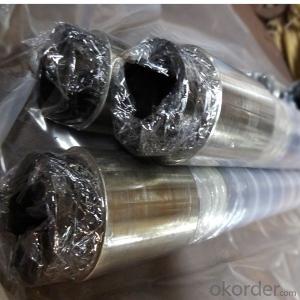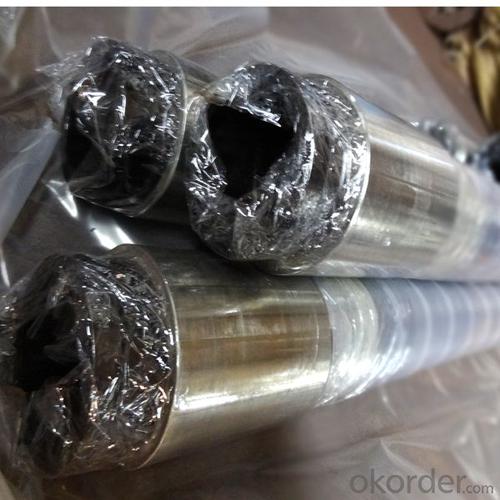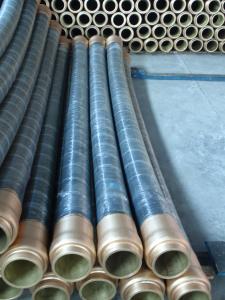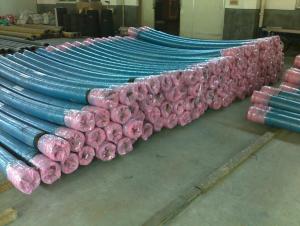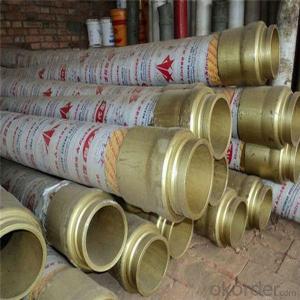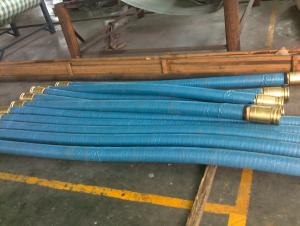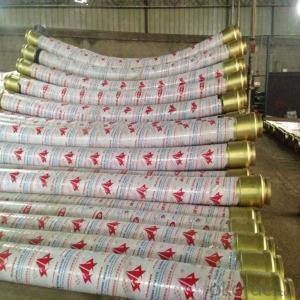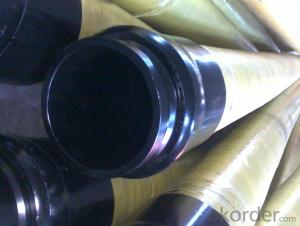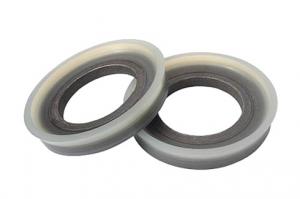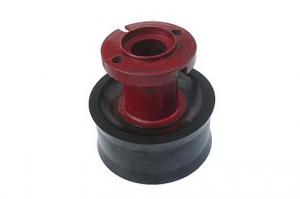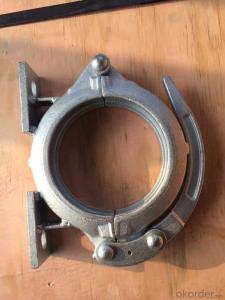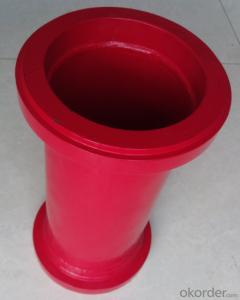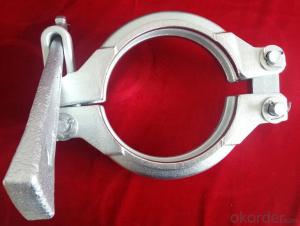Concrete Pumps Spare Parts Rubber End Hose DN125
- Loading Port:
- Tianjin
- Payment Terms:
- TT OR LC
- Min Order Qty:
- 10 pc
- Supply Capability:
- 1000 pc/month
OKorder Service Pledge
OKorder Financial Service
You Might Also Like
Product Description:
The Concrete Pumps Spare Parts Rubber End Hose DN125 normally made by special rubber materials, NR rubber and other rubbers to make sure the quanlity of seals according to customer’s requests, and also package in plywood box or cartons and put into container.
Scope of Application of the Goods
The Concrete Pumps Spare Parts Rubber End Hose DN125 is a concrete pumps parts for combined use with other concrete parts in for concrete pumps and truck pumps. It can be widely used in the construction of various types of concrete structures like industrial and civil buildings, bridges, roads, and other types of infrastructure.
This seals can only be used in Schwing type concrete pumps and truck pumps as well, but not in any other operations.
Product Advantages:
OKorder's Concrete Pumps Spare Parts Rubber End Hose DN125 Channels are durable, strong, and safety.
Main Product Features:
· Premium quality
· Prompt delivery & seaworthy packing (5-10 days)
Reliable performance
Easy to weld
High safety.
· Professional Service
· Competitive pricing
Measuring of wall thickness from the outside
Low purchase cost
Specifications:
DN:125MM
Lengh:3M/4M/5M/6M
Remark:Two side Coupling/ One side Coupling/Without Coupling
FAQ:
Q1: How long about delivery time Concrete Pumps Spare Parts Rubber End Hose DN125 ?
A1: Normally we keep the raw materials for old customers and sometime we also keep stock products to make sure delivery time in any emergency cases.
Q2: How do we guarantee the quality of our Concrete Pumps Spare Parts Rubber End Hose DN125?
A2: We have established an advanced quality management system which conducts strict quality tests at every step, from raw materials to the final product. At the same time, we provide extensive follow-up service assurances as required.
Q3: How soon can we receive the product after purchase?
A3: Within three days of placing an order, we will book the vessel for goods. The specific shipping date is dependent upon international and government factors, but is typically 7 to 30 workdays.
Q4: If we can produce some goods according to customers request?
A4: Yes, we can produce Rubber End Hose DN125 according to the difference country situations to make it suitable to the market and customers. We have very professional technical team to make the design for porduction of seals.
Q5: How to make a quick resolution for after service?
A5: OKorder and our manufacture both have overseas branches all-around of world.
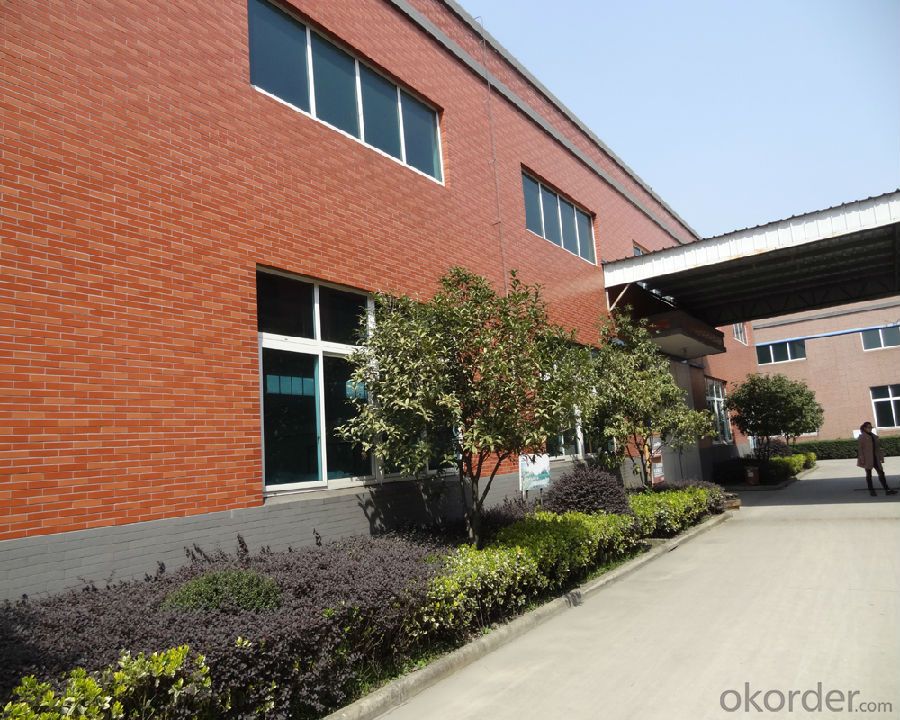
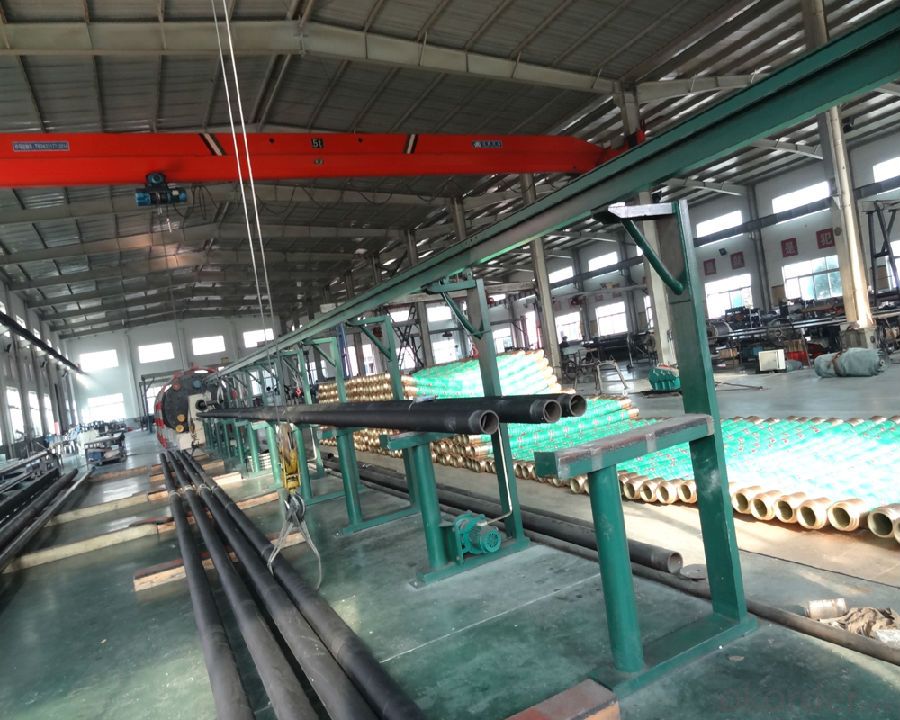
- Q: Which is the best home made concrete pump car?
- The three line is nine and Keni Le, jiubang, Linuo, etc., in addition to cheap, many of the subsequent trouble
- Q: What is the function of a concrete pump hopper grate pin?
- The function of a concrete pump hopper grate pin is to secure the hopper grate in place and prevent it from dislodging or shifting during the concrete pumping process. The pin acts as a mechanism to lock the grate into position, ensuring that it remains stable and does not pose any safety risks or cause disruption to the pumping operation. Additionally, the pin allows for easy removal and replacement of the grate when necessary, facilitating maintenance and cleaning of the hopper. Overall, the concrete pump hopper grate pin plays a crucial role in maintaining the integrity and efficiency of the concrete pumping equipment.
- Q: How does a hydraulic oil cooler maintain optimal temperature in a concrete pump?
- In order to maintain the ideal temperature in a concrete pump and prevent potential issues, it is crucial to have a hydraulic oil cooler. The hydraulic system of a concrete pump is constantly exposed to high pressure and heavy loads, causing the oil within the system to heat up quickly. If the oil temperature exceeds the recommended range, it can lead to decreased efficiency, increased wear and tear, and even system failure. To avoid these problems, a hydraulic oil cooler is installed in the concrete pump. This cooler utilizes a heat exchanger to transfer the excess heat from the hydraulic oil to the surrounding air or another cooling medium, such as water or a refrigerant. This process effectively lowers the temperature of the hydraulic oil, keeping it within the optimal range for operation. The hydraulic oil cooler typically consists of fins or tubes that allow the hot oil to flow through. These fins or tubes increase the surface area of contact between the oil and the cooling medium, enabling efficient heat transfer. In some cases, a fan or pump may be used to enhance the airflow or flow of the cooling medium, further improving the cooling process. By maintaining the hydraulic oil at the ideal temperature, the hydraulic oil cooler ensures that the concrete pump operates at its highest level of performance. This not only increases the overall efficiency and productivity of the pump but also extends the lifespan of critical components. Additionally, by preventing overheating, the hydraulic oil cooler helps to minimize the risk of unexpected downtime and costly repairs. In conclusion, a hydraulic oil cooler is an essential component in a concrete pump as it effectively dissipates excessive heat from the hydraulic oil, ensuring optimal temperature and contributing to the overall productivity and reliability of the pump.
- Q: Can a concrete pump wear plate be repaired or does it need to be replaced entirely?
- A concrete pump wear plate can be repaired in certain situations, but sometimes it may need to be replaced entirely. The decision whether to repair or replace the wear plate depends on the extent of the damage and the overall condition of the plate. Minor damages such as small cracks, dents, or worn out areas can often be repaired using suitable techniques. For example, if there are small cracks, they can be welded or filled with an appropriate epoxy or filler material. Similarly, if there are dents or worn out areas, they can be filled and smoothened to restore the plate's functionality. However, if the wear plate has suffered significant damage, such as extensive cracks, severe corrosion, or large holes, it may be better to replace the plate entirely. This is because repairing such extensive damage may compromise the structural integrity and effectiveness of the wear plate. In these cases, replacing the wear plate ensures the optimal performance and safety of the concrete pump. It is crucial to assess the condition of the wear plate carefully before deciding whether to repair or replace it. Consulting with experts or professionals familiar with concrete pump maintenance can provide valuable guidance in making the right decision. Furthermore, regular maintenance and inspection of the wear plate can help identify any potential issues early on, allowing for timely repairs or replacements to prevent further damage and ensure the efficient operation of the concrete pump.
- Q: What are the common signs of wear and tear on concrete pump spare parts?
- The specific signs of wear and tear on concrete pump spare parts can vary depending on the part in question. However, there are general indications that suggest when a concrete pump spare part is experiencing wear and tear. One indication is the presence of visible damage or deterioration on the surface of the part. This may manifest as cracks, chips, or dents on the outer layer of the spare part. These damages can occur due to regular usage, exposure to harsh environmental conditions, or accidental impact during operation. Another sign is an increase in vibration or noise during operation. If a concrete pump spare part is undergoing wear and tear, it may generate unusual vibrations or noises that were not evident when it was in good condition. This can signify internal damage or misalignment of the part, which can impact its overall performance and efficiency. Diminished performance or efficiency is also a common signal of wear and tear on concrete pump spare parts. If a part is experiencing wear and tear, it may not operate as efficiently as before, resulting in reduced pumping capacity, decreased flow rate, or inefficient operation. This can cause delays in construction projects and increased maintenance costs. Furthermore, an escalation in maintenance and repair requirements can indicate wear and tear on concrete pump spare parts. If a part needs more frequent repairs or replacements than usual, it may suggest that it is undergoing wear and tear. Regular inspections and maintenance can aid in early identification of potential issues and prevent further damage to the spare parts. In conclusion, signs of wear and tear on concrete pump spare parts can include visible damage, heightened vibration or noise during operation, diminished performance or efficiency, and increased maintenance demands. It is crucial to regularly inspect and maintain these spare parts to ensure optimal performance and prolong their lifespan.
- Q: Are there any specific maintenance practices for concrete pump spare parts?
- Concrete pump spare parts should be regularly inspected for signs of wear or damage. This involves checking for visible defects like cracks, leaks, or any other issues. If any problems are found, the spare parts should be immediately replaced or repaired to prevent further damage. Regular cleaning is also essential for concrete pump spare parts. These parts often come into contact with cement, water, and other substances that can cause build-up and affect their performance. Cleaning them regularly will remove debris and residue, ensuring optimal functionality. Lubrication is another important maintenance practice for concrete pump spare parts. Properly lubricating moving components like bearings, seals, and pistons reduces friction and wear, extending the lifespan of the parts. It's crucial to use the correct lubricants recommended by the manufacturer and follow their application guidelines. Proper storage is also vital for maintaining spare parts. They should be stored in a clean, dry environment, away from chemicals or substances that could damage them. Additionally, spare parts should be protected from physical damage, such as being dropped or bumped. Lastly, it's recommended to adhere to the manufacturer's maintenance and replacement guidelines. Regular servicing and inspections by qualified technicians can help identify potential issues early on and prevent major breakdowns or failures. In summary, following specific maintenance practices like regular inspection, cleaning, lubrication, proper storage, and adherence to manufacturer's guidelines are crucial for ensuring optimal performance and longevity of concrete pump spare parts.
- Q: How often should hopper grate levers be inspected or replaced in a concrete pump?
- Hopper grate levers in a concrete pump should be inspected regularly to ensure proper functioning and prevent potential issues. The frequency of inspections may vary depending on factors such as the intensity of use, the type of material being pumped, and the operating conditions. However, a general recommendation for inspections would be to perform them at least once every six months or after every 500 hours of operation. During the inspection, the hopper grate levers should be carefully examined for signs of wear, damage, or misalignment. If any issues are detected, the levers should be replaced immediately to avoid further damage to the hopper grate system or potential safety hazards. It is important to use high-quality replacement parts that are specifically designed for the concrete pump model in order to ensure optimal performance and longevity. Regular inspections and timely replacements of hopper grate levers will help to maintain the efficiency and reliability of the concrete pump, minimizing downtime and costly repairs.
- Q: What is the function of a concrete pump hopper grate clamp?
- A concrete pump hopper grate clamp serves the purpose of securing the hopper grate on a concrete pump. This device ensures that the hopper grate remains fixed in position, preventing the entry of large debris and foreign objects into the pump system. The clamp is specifically designed to tightly hold the hopper grate, guaranteeing its stability during the pumping process. Its role is to preserve the integrity of the pump system and avert any potential damage or blockages caused by unwanted materials. In summary, a concrete pump hopper grate clamp functions as a dependable and secure method to maintain the hopper grate in place, facilitating efficient and seamless concrete pumping operations.
- Q: What is the function of a concrete pump water pump?
- The function of a concrete pump water pump is to supply water to the concrete pump system for various purposes. It is responsible for providing a continuous flow of water to the concrete pump, which helps in the mixing and pumping of concrete efficiently. The water pump ensures that the concrete mix remains at the desired consistency by adding water as needed during the pumping process. It helps to control the hydration process of the cement, preventing it from drying out and becoming unworkable. Additionally, the water pump also serves to clean the concrete pump system after use. It flushes out any excess concrete residue or debris that may have accumulated inside the pump, ensuring that it remains in good working condition. In summary, the function of a concrete pump water pump is to supply water for the mixing of concrete, maintain the desired consistency, and clean the concrete pump system.
- Q: What are the common issues that require replacement of concrete pump spare parts?
- Concrete pumps can experience various issues that necessitate the replacement of spare parts. One prevalent problem is the gradual deterioration of pump components due to wear and tear. Continuous movement of concrete through the pump causes deterioration of parts like the piston, wear plate, and seals, which then need to be replaced. Another issue that may arise is blockages or clogs in the pump line. This occurs when hardened concrete or other debris accumulates, obstructing the flow of concrete. In such cases, replacing parts like the delivery pipe, hose, or even the entire pump line becomes necessary to ensure proper functioning. Leaks are also a common problem in concrete pumps. These leaks often result from damaged or worn-out seals, gaskets, or O-rings. If left unattended, leaks can lead to reduced pump performance and potential safety hazards. Replacing the affected parts helps prevent further damage and ensures efficient pump operation. Additionally, pump malfunctions can be attributed to electrical or mechanical issues. Faulty electrical components, such as switches or sensors, may require replacement to restore proper functionality. Mechanical problems, such as a worn-out gearbox or a malfunctioning hydraulic system, may also necessitate the replacement of specific pump parts. In summary, common issues that call for the replacement of concrete pump spare parts include wear and tear, blockages, leaks, electrical malfunctions, and mechanical failures. Regular maintenance and inspection of the pump enable early identification of these issues, allowing for timely replacement of the necessary spare parts to maintain smooth pump operation.
Send your message to us
Concrete Pumps Spare Parts Rubber End Hose DN125
- Loading Port:
- Tianjin
- Payment Terms:
- TT OR LC
- Min Order Qty:
- 10 pc
- Supply Capability:
- 1000 pc/month
OKorder Service Pledge
OKorder Financial Service
Similar products
Hot products
Hot Searches
Related keywords
